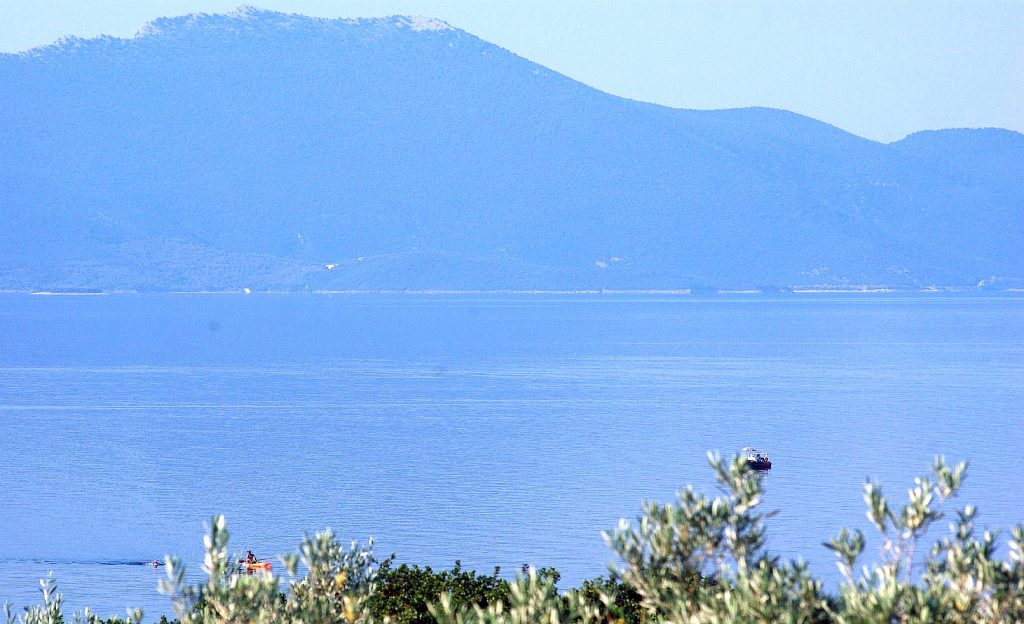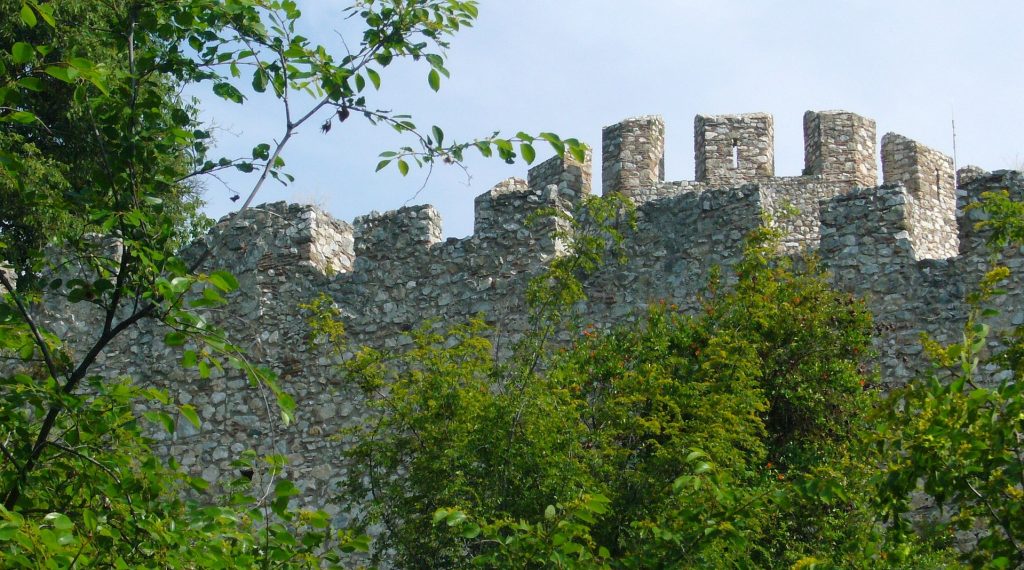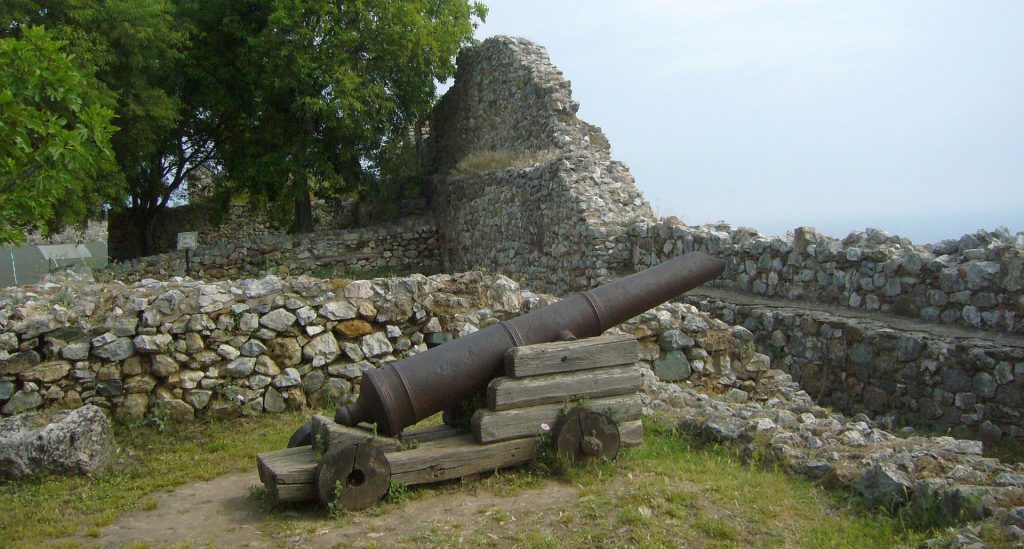We were lingering over our caffeine this morning, and were discussing how quiet the Gulf has been – scarcely a boat have we seen this season – when Ron said: “What’s that on the water?” I looked out at the Pag and saw three canoes, in fairly close proximity to each other, heading across in front of the house. Each canoe was escorting a swimmer.
“Must be some kind of training exercise,” I suggested. “For the Olympics perhaps?” A fourth canoe appeared around the headland to our left, with its accompanying swimmer moving along at an impressive clip.
Before too long, more and more swimmers came by, each one with his or her helper in a brightly coloured canoe. Quite eye-catching. Some of the athletes were superb – scarcely rippling the water – and beautiful to watch. Others were perhaps a little less graceful in their strokes, but all were obviously very strong swimmers. We couldn’t tell from where they’d come, but it was from some distance further down the Pelion Peninsula. Milina perhaps?
We watched for some time, moving from window to window to take photos. Raki, as you’ll note, was bored with the whole thing, and made it quite clear.
Mythos watched our antics at the window from below, but showed no inclination to join us. I think he was keeping an eye on Grappa who was hiding under a bush – he torments her horribly. He’s old and cranky and resents the youngsters.
Dolphins appeared a little further out, and kept pace for a while with the canoes and swimmers. I was expecting them to come closer – they often follow a boat – but they weren’t as curious this morning as they usually are.
I checked the local newspapers online, but could find no reference to this rather fascinating exercise. The participants must be in very fine shape for they covered a considerable distance before disappearing beyond the headland into Afissos. Marathon swimmers, I would guess.
I wasn’t asked to participate – they probably feared the competition.































